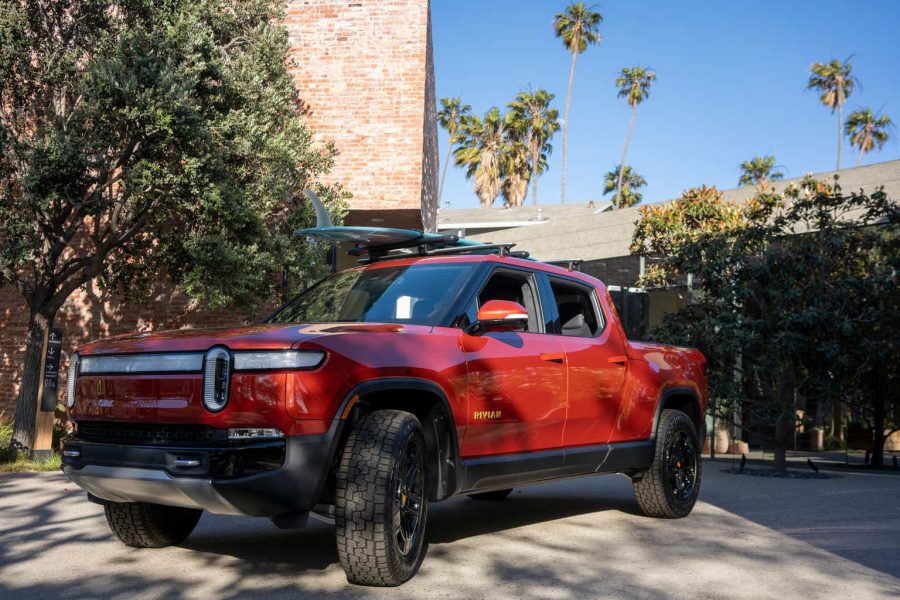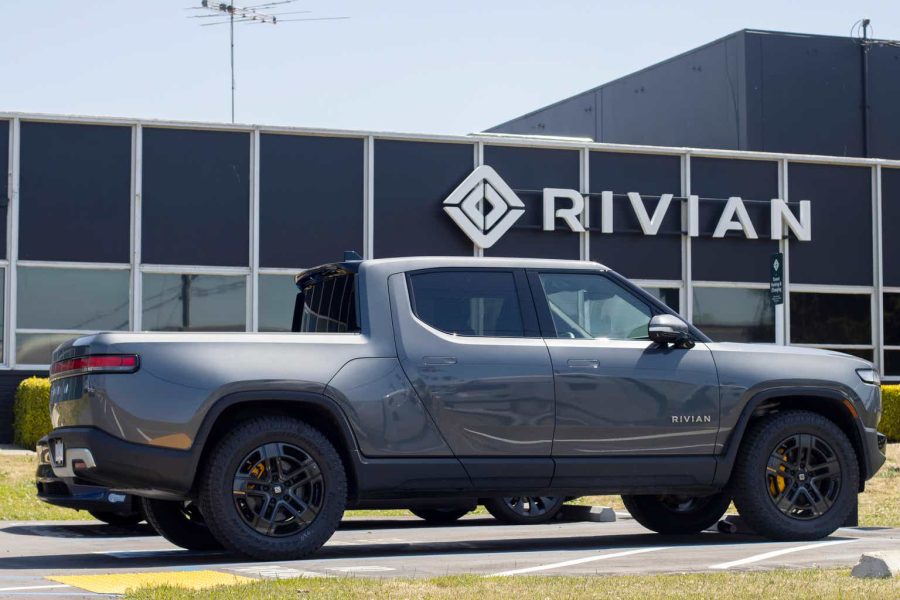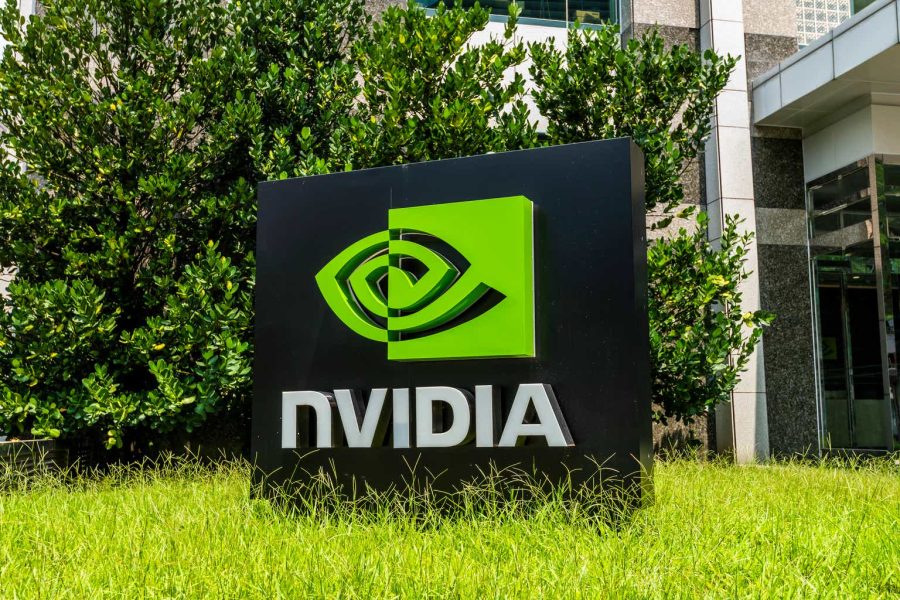July 14, 2024 This Week Top S&P 500 Gainers & Losers
Tesla: Time To Take Profits
Microsoft: The Q4 Results Should Surprise You
Tesla: Optimus And FSD Probably Won’t Save The Day
April 23, 2024 Maximizing Profits: When is the Right Time to Sell Your Business?
April 12, 2024 Improve Your Financial Status: A How-To Guide
April 12, 2024 How ZIM Integrated Container Tracking is Revolutionizing Global Trade
March 15, 2024 6 Best Growth Stocks To Buy Now According to Metatrader 5

Rivian Automotive (RIVN) Stock Forecast for 2024, 2025–2028. Rivian shares Sell or Buy?
Updated: July 26, 2024 (22:06)
Sector: Consumer cyclicalThe share price of Rivian Automotive, Inc. Class A (RIVN) now
50/200 Day Moving Average: $12.96 / $14.56
This figure corresponds to the Average Price over the previous 50/200 days. For Rivian Automotive stocks, the 50-day moving average is the support level today.
For Rivian Automotive stocks, the 200-day moving average is the support level today.
Are you interested in Rivian Automotive, Inc. Class A stocks and want to buy them, or are they already in your portfolio? If yes, then on this page you will find useful information about the dynamics of the Rivian Automotive stock price in 2024, 2025, 2026, 2027, 2028. How much will one Rivian Automotive share be worth in 2024 - 2028?
When should I take profit in Rivian Automotive stock? When should I record a loss on Rivian Automotive stock? What are analysts' forecasts for Rivian Automotive stock? What is the future of Rivian Automotive stock? We forecast Rivian Automotive stock performance using neural networks based on historical data on Rivian Automotive stocks. Also, when forecasting, technical analysis tools are used, world geopolitical and news factors are taken into account.
Rivian Automotive stock prediction results are shown below and presented in the form of graphs, tables and text information, divided into time intervals. (Next month, 2024, 2025, 2026, 2027 and 2028) The final quotes of the instrument at the close of the previous trading day are a signal to adjust the forecasts for Rivian Automotive shares. This happens once a day.
Historical and forecast chart of Rivian Automotive stock
The chart below shows the historical price of Rivian Automotive stock and a prediction chart for the next month. For convenience, prices are divided by color. Forecast prices include: Optimistic Forecast, Pessimistic Forecast, and Weighted Average Best Forecast. Detailed values for the Rivian Automotive stock price can be found in the table below.
Long-term forecasts by years.


As analysts contemplate the future of Rivian (RIVN) stock, certain pivotal factors and strategic events will significantly influence its stock rate. To determine whether RIVN stock is a buy or a sell, it is essential to consider these elements holistically.
### Technology and Partnerships Set the StageOne of the primary catalysts is advancements in battery technology. With Goldman Sachs predicting battery prices to drop from $151/kWh in 2023 to $91/kWh in 2025, Rivian's manufacturing costs will decline. This will make electric vehicles (EVs) more accessible to a broader consumer base, enhancing demand and stock value.
Equally promising is Rivian's partnership with Volkswagen. The joint venture's $5 billion investment provides financial stability and technological collaboration, ensuring Rivian's long-term scalability. This collaboration not only secures essential capital but also amplifies Rivian’s credibility in the automotive industry.
- Battery Technology Advancements
- Volkswagen Joint Venture
- Market Position & Consumer Demand
Rivian's market positioning, especially with the highly popular R1 models, signals robust consumer demand. The introduction of the R2 series in 2026 is expected to further fuel growth. Analysts should monitor production readiness, as the company’s goal of producing 215,000 vehicles annually by 2026 will leverage economies of scale, reducing per-unit costs.
Furthermore, while current market dynamics show a slowdown in EV demand due to high costs and infrastructure challenges, these are viewed as temporary hurdles. Improved charging networks and battery longevity are anticipated to renew consumer interest, benefitting Rivian significantly.
For an accurate RIVN stock forecast, analysts should prioritize these interconnected factors. Observing technological breakthroughs, strategic partnerships, market positioning, production capabilities, and evolving market dynamics will provide critical insights into Rivian's stock prediction trajectory.
Review the original Analysis

Rivian (RIVN) Stock Forecast: Navigating Key Factors for Optimal Investment

As Rivian (RIVN) continues to carve out its niche in the electric vehicle (EV) market, several pivotal factors are expected to influence its stock rate in the near future. Investors and analysts keen on making accurate predictions should focus on these key elements to gauge the company's traction.
Critical Factors Influencing RIVN Stock Value
First and foremost, the **sales growth and market penetration** of Rivian are paramount. The company has seen an 80% spike in its stock price recently, driven by robust sales growth. Maintaining or enhancing this momentum will be crucial in bolstering investor confidence and the stock's overall valuation, showcasing Rivian's ability to capture market share.
Rivian's target of achieving **profitability by Q4 2024** is another significant determinant. The company's strategic moves to cut costs and improve production efficiencies are closely watched. Successfully delivering on this promise will greatly enhance investor trust, while any shortfall could lead to a market downturn.
- **Volkswagen Partnership and the $5B Deal**: This collaboration not only provides financial stability but also signals strong institutional confidence. Innovations from this partnership could further elevate Rivian’s stock.
- **Cost Reduction and Operational Efficiency**: Retooling manufacturing processes to lower costs will extend the firm's cash runway, promoting better margins and financial health.
- **High Revenue Growth Estimates**: Projections for significant revenue growth in the coming years maintain a positive outlook for long-term investors, driving stock valuations upward.
Conversely, Rivian's dependence on the U.S. market and potential political risks present notable challenges. Shifts in domestic policies concerning renewable energy could impact EV sales and market dynamics, introducing uncertainty to the stock’s valuation.
Lastly, **integration with Tesla’s Supercharger Network** and **manufacturing simplification** are key initiatives that can boost consumer demand and operational efficiencies, positively influencing stock prices.
By analyzing these critical factors, including Rivian’s sales growth, profitability targets, and strategic partnerships, analysts can make more reliable RIVN stock predictions. As the EV market evolves, closely tracking these events will be essential for making informed buy or sell decisions on RIVN stock.
Review the original Analysis

Volkswagen Partnership Turbocharges Rivian's Stock Forecast

When peering into the crystal ball of RIVN stock predictions, a monumental partnership shines as the beacon of change. Rivian's recent alliance with automotive giant Volkswagen has accelerated discussions and forecasts around RIVN stocks. This venture not only slashes development costs for Rivian but propels the electric vehicle (EV) manufacturer closer to profitability—a key factor that can sway the RIVN stock forecast from stormy to sunny.
Navigating Through Electrified Predictions
The path to accurate RIVN stock predictions is fraught with variables, yet the Rivian-Volkswagen partnership stands out as a guiding light. Analyzing the benefits of this collaboration provides crucial insights for analysts aiming to nail down the RIVN stock forecast. By drastically reducing Rivian's operational costs and potentially quickening its march towards profitability, the investment from Volkswagen injects a potent dose of optimism into Rivian's financial health. This, in turn, could make RIVN stocks a desirable buy in the eyes of many investors.
However, challenges lurk in the broader EV market landscape. Slowing demand and market saturation can throw a wrench into the most hopeful forecasts. Even so, the resilient Rivian-Volkswagen duo offers a cushion against these headwinds, making the future seem brighter for RIVN stocks. Analysts weaving these critical factors into their tapestry of predictions will likely deliver a more nuanced and accurate forecast of RIVN's stock trajectory. Whether asking "Is RIVN stock a buy?" or debating "RIVN stock buy or sell?", the answers hinge on a blend of partnership perks and market dynamics.
In conclusion, as Rivian forges ahead with Volkswagen's backing, the forecast for RIVN stocks looks increasingly promising. The blend of lowered costs, accelerated profitability, and strategic partnership positioning makes Rivian a potential beacon for investors navigating the electric vehicle market's turbulent waters.
Review the original Analysis
RIVN Stock: A Glimpse into the Future Amidst EV Market Dynamics
As the electric vehicle (EV) sector undergoes turbulence, investors and industry watchers are keenly observing Rivian Automotive (NASDAQ:RIVN) and its stock performance. Amidst this backdrop, the question that looms large is: How accurately can the RIVN stocks be predicted? Rivian, a company that has positioned itself as a significant player in the EV market, faces an unpredictable journey, yet several indicators provide insight into its potential trajectory.
In recent developments, other automakers retracting from the EV space has inadvertently favored Rivian. With less competition and a focus on meeting its EV production targets, Rivian stands out. Furthermore, the anticipated shift to profit gross margins later this year is expected to catalyze a positive shift for RIVN stocks. However, the company’s journey is not devoid of challenges. The broader concerns affecting the EV market, such as softening consumer demand and uncertainties around charging network infrastructure, add layers of complexity to predicting RIVN stock rates with absolute certainty.
What’s Driving RIVN Stocks?
Analysts are closely watching two pivotal events that can significantly influence Rivian’s stock rates. Firstly, the end of its enterprise exclusivity agreement with Amazon opens the door to a plethora of enterprise orders, potentially bolstering Rivian’s market position. Secondly, the company’s effort to continue ramping up production, with a recent 17% quarter-over-quarter increase in unit production volumes, signals robust operational capabilities.
However, it is impossible to ignore the persistent EV market issues highlighted by alleged weakening in consumer demand and worries about network infrastructure. With Rivian trading at a lower revenue multiple compared to Tesla, it indicates an “early stage” entry point that carries both opportunity and risk.
Given the volatile nature of the EV market, predicting RIVN stock rates involves assessing an array of factors, including EV production achievements, market competition, and broader sector challenges. Investors contemplating if RIVN stock is a buy, hold, or sell will need to weigh these variables carefully. The RIVN stock prediction for the near future hinges on how effectively Rivian navigates through these transformative times, making it a fascinating watch for those invested in the EV narrative.
Rivian is an American electric vehicle manufacturer. The company was founded in 2009. Rivian is building an electric sports utility vehicle (SUV) and pickup truck on a skateboard platform that can support future models or be used by other companies.
Rivian Automotive daily forecast for a month
| Date | Target | Pes. | Opt. | Vol., % |
|---|---|---|---|---|
| Jul 28 | 16.28 | 15.90 | 16.74 | 5.24 |
| Jul 29 | 16.45 | 16.31 | 16.62 | 1.90 |
| Jul 30 | 16.60 | 16.20 | 16.87 | 4.18 |
| Jul 31 | 16.00 | 15.79 | 16.26 | 2.96 |
| Aug 01 | 16.09 | 15.86 | 16.27 | 2.56 |
| Aug 02 | 16.62 | 16.17 | 17.06 | 5.51 |
| Aug 03 | 16.83 | 16.48 | 17.17 | 4.21 |
| Aug 04 | 16.90 | 16.65 | 17.34 | 4.14 |
| Aug 05 | 17.00 | 16.58 | 17.23 | 3.94 |
| Aug 06 | 16.84 | 16.44 | 17.03 | 3.56 |
| Aug 07 | 16.41 | 16.16 | 16.58 | 2.60 |
| Aug 08 | 16.76 | 16.44 | 17.10 | 4.04 |
| Aug 09 | 16.97 | 16.48 | 17.10 | 3.75 |
| Aug 10 | 16.74 | 16.50 | 16.89 | 2.35 |
| Aug 11 | 16.58 | 16.39 | 16.71 | 1.98 |
| Aug 12 | 16.98 | 16.73 | 17.12 | 2.31 |
| Aug 13 | 17.34 | 17.18 | 17.76 | 3.39 |
| Aug 14 | 17.01 | 16.47 | 17.25 | 4.75 |
| Aug 15 | 17.05 | 16.77 | 17.59 | 4.92 |
| Aug 16 | 16.72 | 16.56 | 17.21 | 3.96 |
| Aug 17 | 16.56 | 16.19 | 16.92 | 4.54 |
| Aug 18 | 16.60 | 16.25 | 16.77 | 3.19 |
| Aug 19 | 16.53 | 16.35 | 16.70 | 2.14 |
| Aug 20 | 16.23 | 16.03 | 16.67 | 3.97 |
| Aug 21 | 16.69 | 16.21 | 17.01 | 4.94 |
| Aug 22 | 17.00 | 16.48 | 17.38 | 5.45 |
| Aug 23 | 16.64 | 16.30 | 17.09 | 4.82 |
| Aug 24 | 16.81 | 16.32 | 17.01 | 4.24 |
| Aug 25 | 17.09 | 16.72 | 17.55 | 4.95 |
| Aug 26 | 16.50 | 16.33 | 17.01 | 4.16 |
Rivian Automotive Daily Price Targets
Rivian Automotive Stock Forecast 07-28-2024.
Forecast target price for 07-28-2024: $16.28.
Positive dynamics for Rivian Automotive shares will prevail with possible volatility of 4.979%.
Pessimistic target level: 15.90
Optimistic target level: 16.74
Rivian Automotive Stock Forecast 07-29-2024.
Forecast target price for 07-29-2024: $16.45.
Positive dynamics for Rivian Automotive shares will prevail with possible volatility of 1.861%.
Pessimistic target level: 16.31
Optimistic target level: 16.62
Rivian Automotive Stock Forecast 07-30-2024.
Forecast target price for 07-30-2024: $16.60.
Positive dynamics for Rivian Automotive shares will prevail with possible volatility of 4.014%.
Pessimistic target level: 16.20
Optimistic target level: 16.87
Rivian Automotive Stock Forecast 07-31-2024.
Forecast target price for 07-31-2024: $16.00.
Negative dynamics for Rivian Automotive shares will prevail with possible volatility of 2.873%.
Pessimistic target level: 15.79
Optimistic target level: 16.26
Rivian Automotive Stock Forecast 08-01-2024.
Forecast target price for 08-01-2024: $16.09.
Positive dynamics for Rivian Automotive shares will prevail with possible volatility of 2.493%.
Pessimistic target level: 15.86
Optimistic target level: 16.27
Rivian Automotive Stock Forecast 08-02-2024.
Forecast target price for 08-02-2024: $16.62.
Positive dynamics for Rivian Automotive shares will prevail with possible volatility of 5.220%.
Pessimistic target level: 16.17
Optimistic target level: 17.06
RIVN (RIVN) Monthly Stock Prediction for 2024
| Month | Target | Pes. | Opt. | Vol., % |
|---|---|---|---|---|
| Aug. | 19.09 | 17.58 | 21.29 | 17.43 |
| Sep. | 17.40 | 16.34 | 18.69 | 12.57 |
| Oct. | 18.97 | 16.68 | 20.44 | 18.38 |
| Nov. | 15.56 | 14.38 | 16.90 | 14.91 |
| Dec. | 13.79 | 13.05 | 15.65 | 16.65 |
Rivian Automotive forecast for this year
Rivian Automotive Stock Prediction for Aug 2024
An uptrend is forecast for this month with an optimal target price of $19.0872. Pessimistic: $17.58. Optimistic: $21.29
Rivian Automotive Stock Prediction for Sep 2024
An downtrend is forecast for this month with an optimal target price of $17.4038. Pessimistic: $16.34. Optimistic: $18.69
Rivian Automotive Stock Prediction for Oct 2024
An uptrend is forecast for this month with an optimal target price of $18.9701. Pessimistic: $16.68. Optimistic: $20.44
Rivian Automotive Stock Prediction for Nov 2024
An downtrend is forecast for this month with an optimal target price of $15.5555. Pessimistic: $14.38. Optimistic: $16.90
Rivian Automotive Stock Prediction for Dec 2024
An downtrend is forecast for this month with an optimal target price of $13.7915. Pessimistic: $13.05. Optimistic: $15.65
Rivian Automotive (RIVN) Monthly Stock Prediction for 2025
| Month | Target | Pes. | Opt. | Vol., % |
|---|---|---|---|---|
| Jan | 13.47 | 11.87 | 14.46 | 17.94 |
| Feb | 13.54 | 12.40 | 14.13 | 12.25 |
| Mar | 14.13 | 13.11 | 14.66 | 10.58 |
| Apr | 14.84 | 13.69 | 15.61 | 12.32 |
| May | 14.25 | 12.30 | 15.20 | 19.07 |
| Jun | 15.35 | 13.75 | 15.91 | 13.55 |
| Jul | 14.11 | 12.59 | 15.05 | 16.37 |
| Aug | 14.87 | 12.78 | 16.77 | 23.78 |
| Sep | 16.42 | 14.62 | 18.41 | 20.56 |
| Oct | 15.01 | 14.22 | 16.68 | 14.74 |
| Nov | 16.30 | 15.25 | 17.21 | 11.42 |
| Dec | 16.95 | 15.82 | 18.72 | 15.48 |
Rivian Automotive (RIVN) Monthly Stock Prediction for 2026
| Month | Target | Pes. | Opt. | Vol., % |
|---|---|---|---|---|
| Jan | 19.57 | 16.96 | 21.83 | 22.27 |
| Feb | 21.19 | 20.20 | 23.14 | 12.69 |
| Mar | 21.38 | 20.50 | 23.58 | 13.06 |
| Apr | 20.54 | 19.39 | 22.79 | 14.92 |
| May | 20.09 | 17.96 | 21.32 | 15.77 |
| Jun | 19.04 | 17.12 | 19.76 | 13.36 |
| Jul | 19.25 | 18.35 | 21.81 | 15.88 |
| Aug | 18.18 | 15.75 | 20.11 | 21.64 |
| Sep | 19.71 | 17.44 | 21.13 | 17.46 |
| Oct | 18.19 | 17.24 | 19.66 | 12.32 |
| Nov | 18.74 | 17.39 | 20.16 | 13.72 |
| Dec | 15.77 | 13.90 | 17.25 | 19.42 |
Rivian Automotive (RIVN) Monthly Stock Prediction for 2027
| Month | Target | Pes. | Opt. | Vol., % |
|---|---|---|---|---|
| Jan | 13.50 | 12.63 | 15.25 | 17.21 |
| Feb | 13.45 | 12.82 | 14.57 | 11.97 |
| Mar | 14.81 | 13.05 | 15.40 | 15.24 |
| Apr | 16.81 | 15.51 | 18.35 | 15.50 |
| May | 15.75 | 14.99 | 17.08 | 12.28 |
| Jun | 18.02 | 15.88 | 18.76 | 15.38 |
| Jul | 16.82 | 16.15 | 18.76 | 13.88 |
| Aug | 15.88 | 13.82 | 17.20 | 19.62 |
| Sep | 15.11 | 14.29 | 17.09 | 16.39 |
| Oct | 14.86 | 12.78 | 16.20 | 21.14 |
| Nov | 13.77 | 12.95 | 14.61 | 11.36 |
| Dec | 12.35 | 11.62 | 13.29 | 12.55 |
Rivian Automotive (RIVN) Monthly Stock Prediction for 2028
| Month | Target | Pes. | Opt. | Vol., % |
|---|---|---|---|---|
| Jan | 13.07 | 11.56 | 14.34 | 19.36 |
| Feb | 13.42 | 12.67 | 14.77 | 14.23 |
| Mar | 12.82 | 11.11 | 13.32 | 16.62 |
| Apr | 13.51 | 12.46 | 14.24 | 12.47 |
| May | 15.28 | 14.73 | 17.04 | 13.56 |
| Jun | 15.64 | 13.92 | 17.72 | 21.44 |
| Jul | 18.29 | 17.50 | 20.72 | 15.57 |
| Aug | 17.46 | 15.89 | 19.73 | 19.44 |
| Sep | 18.06 | 16.79 | 18.78 | 10.56 |
| Oct | 20.69 | 18.31 | 21.55 | 15.04 |
| Nov | 19.39 | 16.91 | 22.18 | 23.76 |
| Dec | 19.25 | 17.97 | 20.53 | 12.49 |
Rivian Automotive information and performance
14600 MYFORD ROAD, IRVINE, CA, US
Market capitalization of the Rivian Automotive, Inc. Class A is the total market value of all issued shares of a company. It is calculated by the formula multiplying the number of RIVN shares in the company outstanding by the market price of one share.
EBITDA of Rivian Automotive is earnings before interest, income tax and depreciation of assets.
P/E ratio (price to earnings) - shows the ratio between the price of a share and the company's profit
Price/earnings to growth
Dividend Per Share is a financial indicator equal to the ratio of the company's net profit available for distribution to the annual average of ordinary shares.
Dividend yield is a ratio that shows how much a company pays in dividends each year at the stock price.
EPS shows how much of the net profit is accounted for by the common share.
Trailing P/E depends on what has already been done. It uses the current share price and divides it by the total earnings per share for the last 12 months.
Forward P/E uses projections of future earnings instead of final numbers.
Enterprise Value (EV) /Revenue
The EV / EBITDA ratio shows the ratio of the cost (EV) to its profit before tax, interest and amortization (EBITDA).
Number of issued ordinary shares
Number of freely tradable shares
Shares Short Prior Month - the number of shares in short positions in the last month.


















































